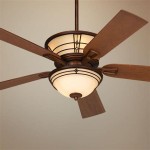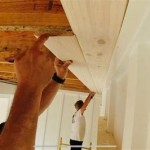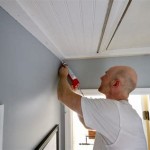Can You Put Wood Planks Over Popcorn Ceiling Texture?
Popcorn ceilings, once a popular choice for their sound-dampening qualities and ease of installation, are now often considered outdated and aesthetically unappealing. Many homeowners seek ways to update their ceilings without the extensive and potentially messy process of removing the existing texture. One alternative gaining traction is covering the popcorn ceiling with wood planks. While seemingly straightforward, this approach involves several considerations related to structural integrity, installation techniques, and code compliance. This article explores the feasibility of installing wood planks over popcorn ceilings, outlining the necessary steps and potential challenges involved.
Assessing the Existing Popcorn Ceiling
Before commencing any project involving covering a popcorn ceiling, a thorough assessment of its condition is crucial. The primary concern lies in the adhesion of the textured coating to the underlying ceiling substrate, typically drywall or plaster. If the popcorn texture is already peeling, crumbling, or exhibiting signs of water damage, simply covering it with wood planks is not a viable long-term solution. The weight of the planks will likely exacerbate the existing issues, leading to potential collapse or detachment of the entire ceiling system. Furthermore, popcorn ceilings installed before the late 1970s may contain asbestos, a hazardous material. Disturbing asbestos-containing materials during removal or even covering them can release harmful fibers into the air, posing significant health risks. Therefore, professional testing is mandatory before any work begins on potentially asbestos-containing popcorn ceilings. Ignoring this step can lead to severe legal and health consequences.
The assessment should also encompass the level of the popcorn texture. A lightly textured ceiling presents fewer challenges than a heavily textured one. Uneven surfaces can create gaps between the wood planks and the ceiling, resulting in an unstable and unattractive installation. In such cases, some level of surface preparation might be necessary, such as skimming with joint compound to create a smoother base, before the planks can be installed. However, again, if asbestos is present, this is not an option. The existing ceiling's structural integrity should also be evaluated. Check for signs of sagging, cracks, or water stains, which could indicate underlying problems with the roof or framing. Addressing these issues before installing wood planks is essential to ensure a safe and durable final product.
Preparation and Installation Considerations
Assuming the popcorn ceiling is stable, asbestos-free, and relatively even, the next step involves preparing the surface for the wood plank installation. This typically begins with cleaning the ceiling to remove any dust, debris, or loose particles. A simple vacuuming or wiping with a damp cloth can suffice. The next crucial step involves establishing a solid attachment method for the wood planks. Directly attaching the planks to the popcorn texture is not recommended, as the texture itself provides insufficient holding power. The preferred method involves installing furring strips, which are thin pieces of wood, perpendicular to the direction of the planks. These strips are screwed directly into the ceiling joists, providing a secure framework for attaching the planks.
Finding the ceiling joists is essential for ensuring the furring strips are properly anchored. A stud finder can be used to locate the joists, typically spaced 16 or 24 inches apart. It's important to note the direction of the joists as well. The furring strips should be installed perpendicular to them. Once the furring strips are in place, the wood planks can be attached to them. Several methods can be used, including nailing, screwing, or using construction adhesive. The choice depends on the type of wood planks being used and the desired aesthetic. If using nails or screws, ensure they are long enough to penetrate through the plank and the furring strip, reaching securely into the ceiling joist. Construction adhesive can provide additional holding power, but it’s crucial to use a high-quality adhesive specifically designed for bonding wood to wood. Gaps and inconsistencies can be a major issue. Planning the wood plank layout beforehand is critical to avoid awkward cuts or uneven spacing. Starting from a central point and working outwards can help ensure a symmetrical and balanced appearance. Some planks have tongue-and-groove edges, which facilitate a seamless and easy interlocking installation. These are generally easier to use.
Proper ventilation is also crucial when working with wood and adhesives. Ensure adequate airflow in the room to prevent the buildup of fumes and facilitate the drying process. Wearing safety glasses and a dust mask is recommended, especially when cutting or sanding wood. It is also essential to factor in the added weight of the wood planks. Ceilings are designed to support a certain load, and adding excessive weight can compromise their structural integrity. Consulting with a structural engineer may be advisable, particularly for older homes or ceilings already showing signs of weakness. This will ensure that the existing ceiling structure can safely support the additional load of the wood planks.
Potential Challenges and Considerations
While covering a popcorn ceiling with wood planks may seem like a relatively simple DIY project, several potential challenges need consideration. One of the most significant challenges is dealing with existing ceiling fixtures, such as lights, fans, or smoke detectors. These fixtures will need to be carefully removed before installing the wood planks and then reinstalled after the planks are in place. This process may require electrical work, so it's important to turn off the power to the circuit before starting and consider hiring a qualified electrician to handle the wiring.
Another potential challenge is the loss of ceiling height. Adding wood planks and furring strips will inevitably lower the ceiling, which can be a concern in rooms with already low ceilings. Ensure that the reduced ceiling height will not create an uncomfortable or cramped feeling. Building codes must be considered to stay within legal specifications. Before initiating the project, it is prudent to check local building codes and regulations regarding ceiling heights and fire safety. Some codes may have specific requirements for ceiling materials and fire resistance, which could affect the choice of wood planks. In some areas, a permit may be required for any ceiling modification. Failing to comply with building codes can result in fines or the need to remove the installed planks.
Furthermore, acoustics can be affected. While popcorn ceilings are not known for superior acoustical performance, they do offer some sound absorption. Covering the ceiling with wood planks can create a more reflective surface, potentially increasing echo and reverberation in the room. This may be a concern in rooms used for entertainment or conversation. Sound-absorbing materials, such as acoustic panels, can be added to the room to mitigate this effect. Finally, the overall cost of the project should be carefully considered. The cost of wood planks can vary widely depending on the type of wood, its thickness, and its finish. Additional costs include furring strips, fasteners, adhesive, and potentially professional labor. Obtaining multiple quotes from contractors can help ensure a fair price. Accurately estimating the total cost helps avoid unexpected expenses and ensures the project remains within budget.

How To Plank A Popcorn Ceiling

How To Easily Plank A Textured Ceiling Sincerely Marie Designs

How To Easily Plank A Textured Ceiling Sincerely Marie Designs

Covering Popcorn Ceilings With Planks Shaye Elliott

Popcorn Ceiling Makeover Wood Planks Nesting With Grace

How To Plank A Popcorn Ceiling

How To Easily Plank A Textured Ceiling Sincerely Marie Designs

How To Plank A Popcorn Ceiling

Easily Cover Popcorn Ceilings With Shiplap

How To Cover A Popcorn Ceiling With Shiplap Sprucing Up Mamahood
Related Posts








